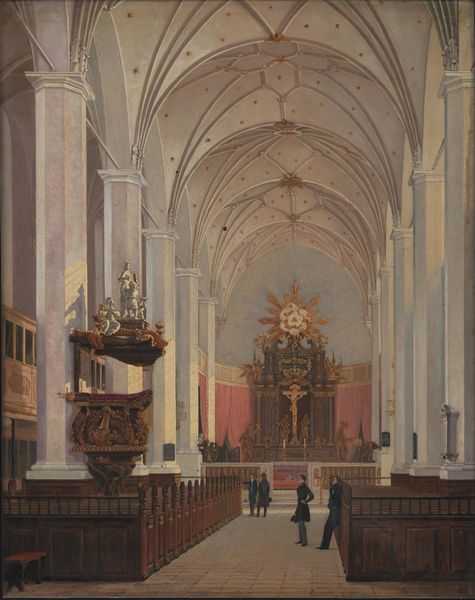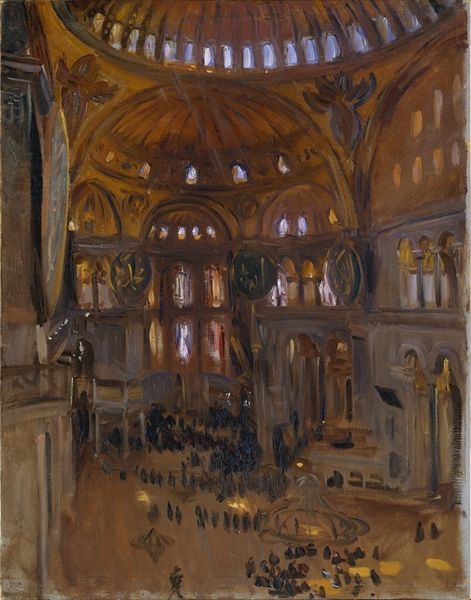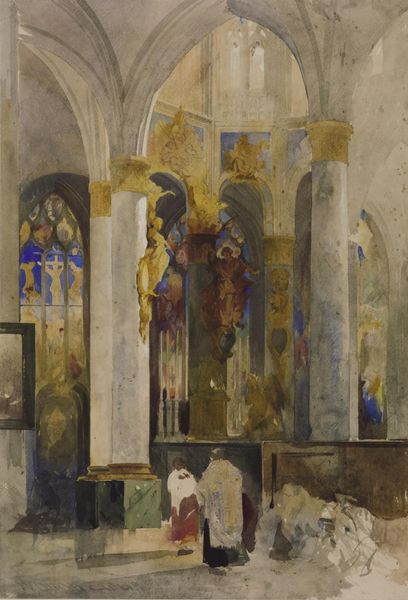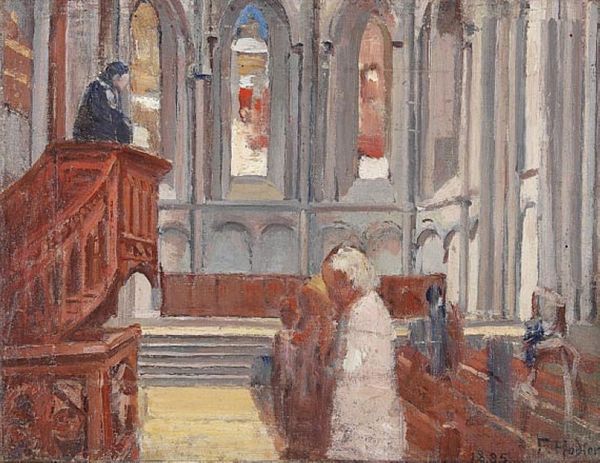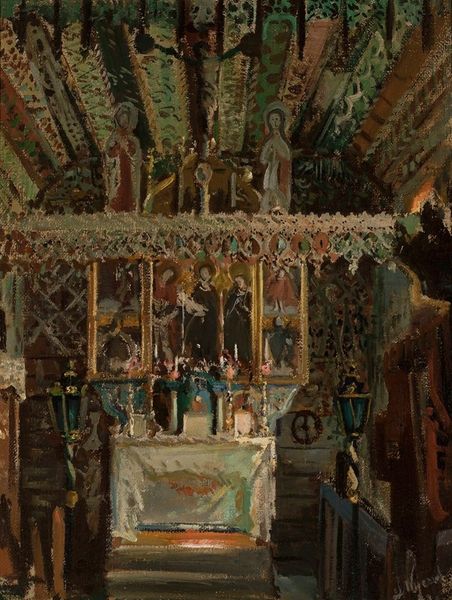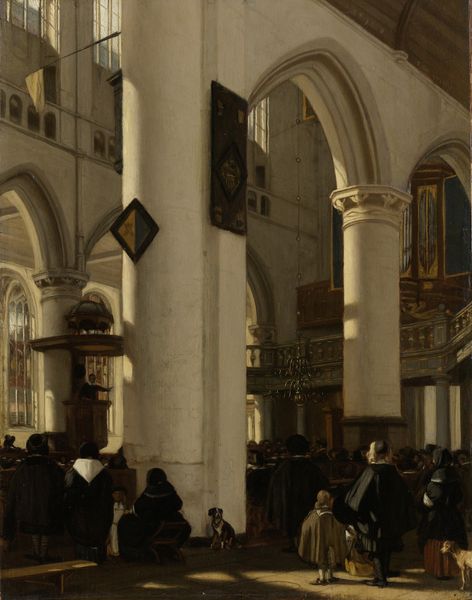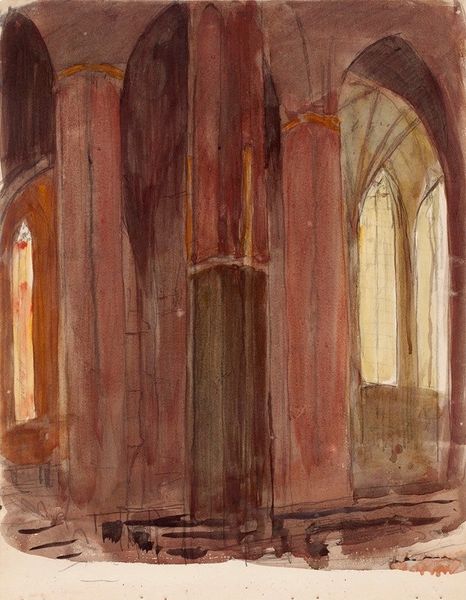
painting, watercolor
#
water colours
#
painting
#
watercolor
#
symbolism
#
genre-painting
Copyright: Public domain
Curator: This watercolor by Magnus Enckell, dating back to 1899, captures a "Midsummer Day Service in Lohja Church". It's a compelling depiction of a moment in time. Editor: It strikes me as both ethereal and grounded. The washes of color give it this dreamlike quality, but the figures themselves, particularly in the foreground, feel very present and stoic. Curator: Exactly, the balance between form and atmosphere is quite sophisticated. Observe the structural repetition; the arches echoing the windows, then mirrored in the seated congregation creates this rhythmic visual structure. Note too how Enckell masterfully handles light, filtering through the windows to softly illuminate the interior space. Editor: And yet that very soft light feels almost…oppressive? Midsummer is usually celebrated with light and joy, but the subdued palette, heavy black robes, and even the slightly blurred figures create a somber mood. Is this celebratory or are we looking at something that explores more about belonging, community and social expectations around turn of the century religious services? Curator: One might read it as commentary but it also serves an organizational purpose. That subdued tonality ensures that our attention focuses on the geometric forms in the architecture, such as the clean vertical lines that draw the eye upwards along the columns, and the sweeping arches that emphasize the space's inherent design. The color relationships here are paramount: the juxtaposition of warm hues in the frescoes against the cool blues of the window. Editor: Absolutely, the vertical emphasis leads your eye upward but it also feels symbolic given the presence of those draped figures. The setting of the watercolor feels deliberate, a specific Finnish cultural and historical setting, particularly as societal norms evolved toward increased visibility for diverse identities. It captures a pivotal intersection between established norms and the beginnings of change. Curator: It’s a truly deft study in capturing the relationship between people and structure. Notice how, while generalized, they help activate the architecture, lending life and interest throughout. Editor: Perhaps it offers a poignant view into the tensions present at the crossroads of tradition and cultural evolution? Enckell gives us, through its aesthetic and its historical position, much to contemplate, I think.
Comments
No comments
Be the first to comment and join the conversation on the ultimate creative platform.
